
Leantime is an open source project management system for non-project manager.
We combine strategy, planning and executing while making it easy for everyone on the team to use.
It's an alternative to ClickUp, Monday, or Asana. As simple as Trello but as feature-rich as Jira.
https://leantime.io
| Task Management | Project Planning | Information/Knowledge Management | Administration |
|---|---|---|---|
| Task management via kanban boards, gantt, table, list and calendar views |
Project Dashboards, reports & status updates | Wikis / Docs | Easy installation |
| Unlimited subtasks and dependencies | Goal & metrics tracking | Idea Boards | Multiple user roles and per project permissions |
| Milestone management | Lean & Business Model Canvas | Retrospectives | Two factor authentication |
| Sprint Management | SWOT Analysis canvas | File Storage via S3 or local filesystem | LDAP, OIDC integration |
| Timetracking & timesheets | Risk Analysis | Screen & webcam recording | Integration with Mattermost, Slack, Discord and Zulip (more coming soon) |
| ... and more | Comments/discussions on everything | Available in 19 languages |
*yes, all of these features are included in the OSS version
 |
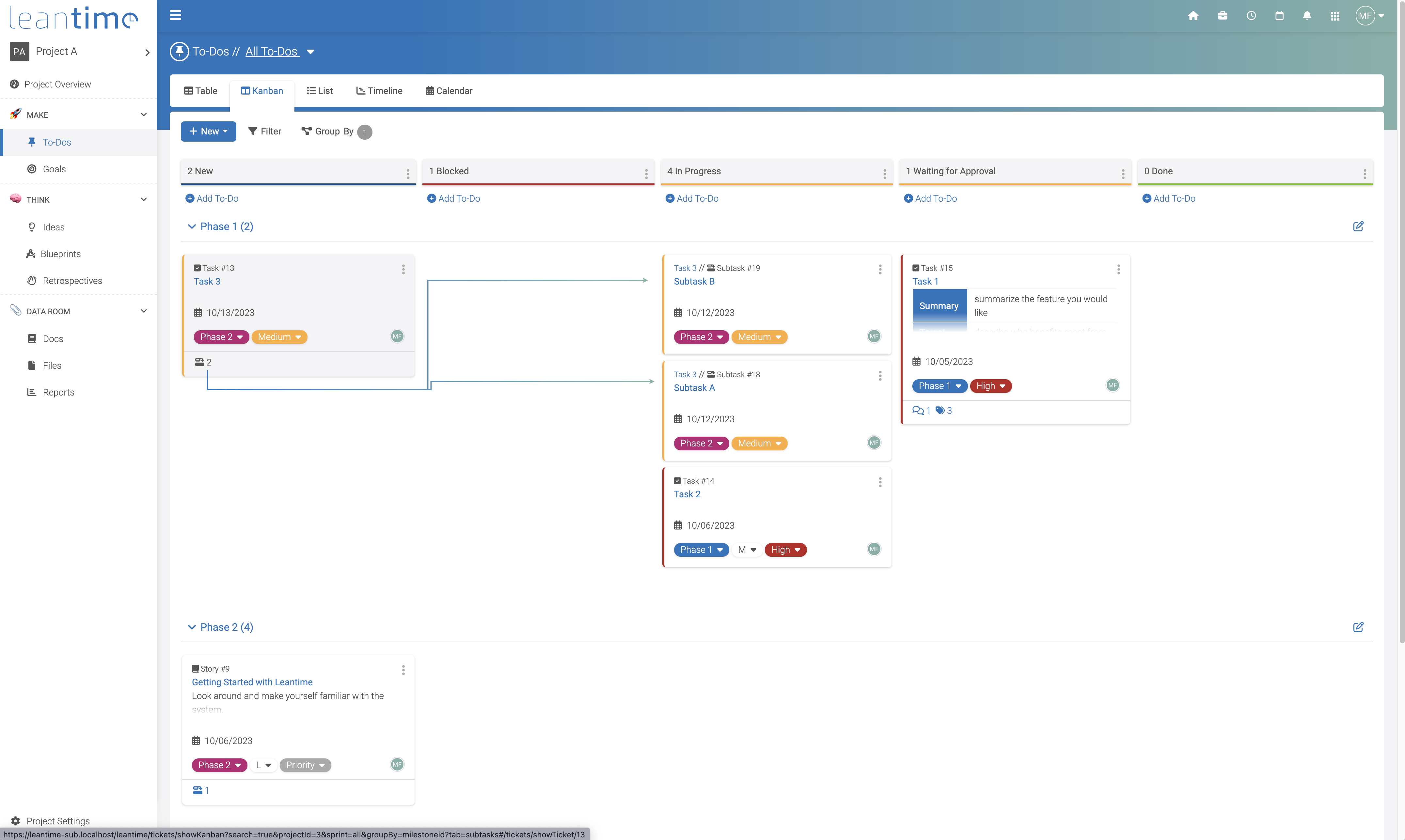 |
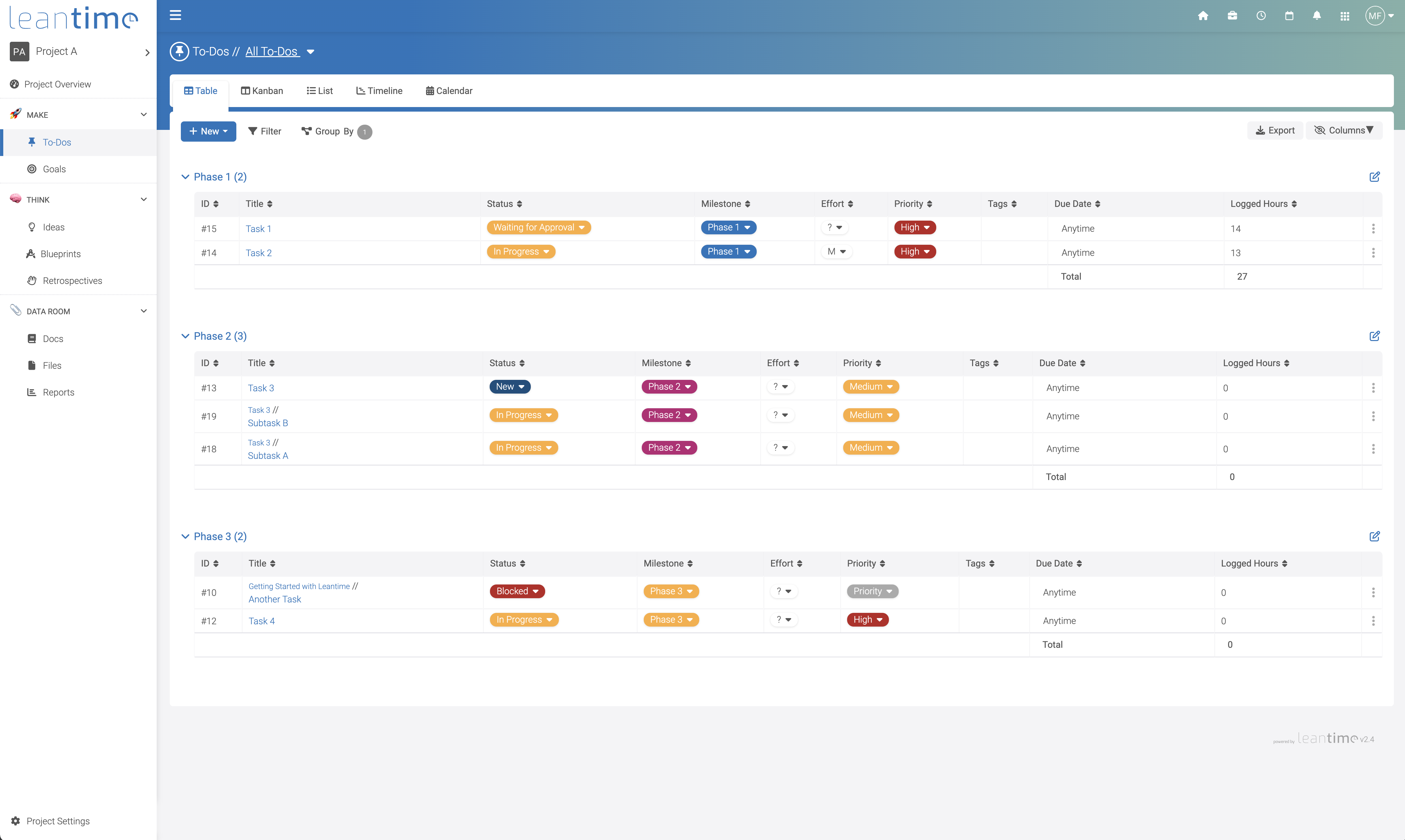 |
|---|---|---|
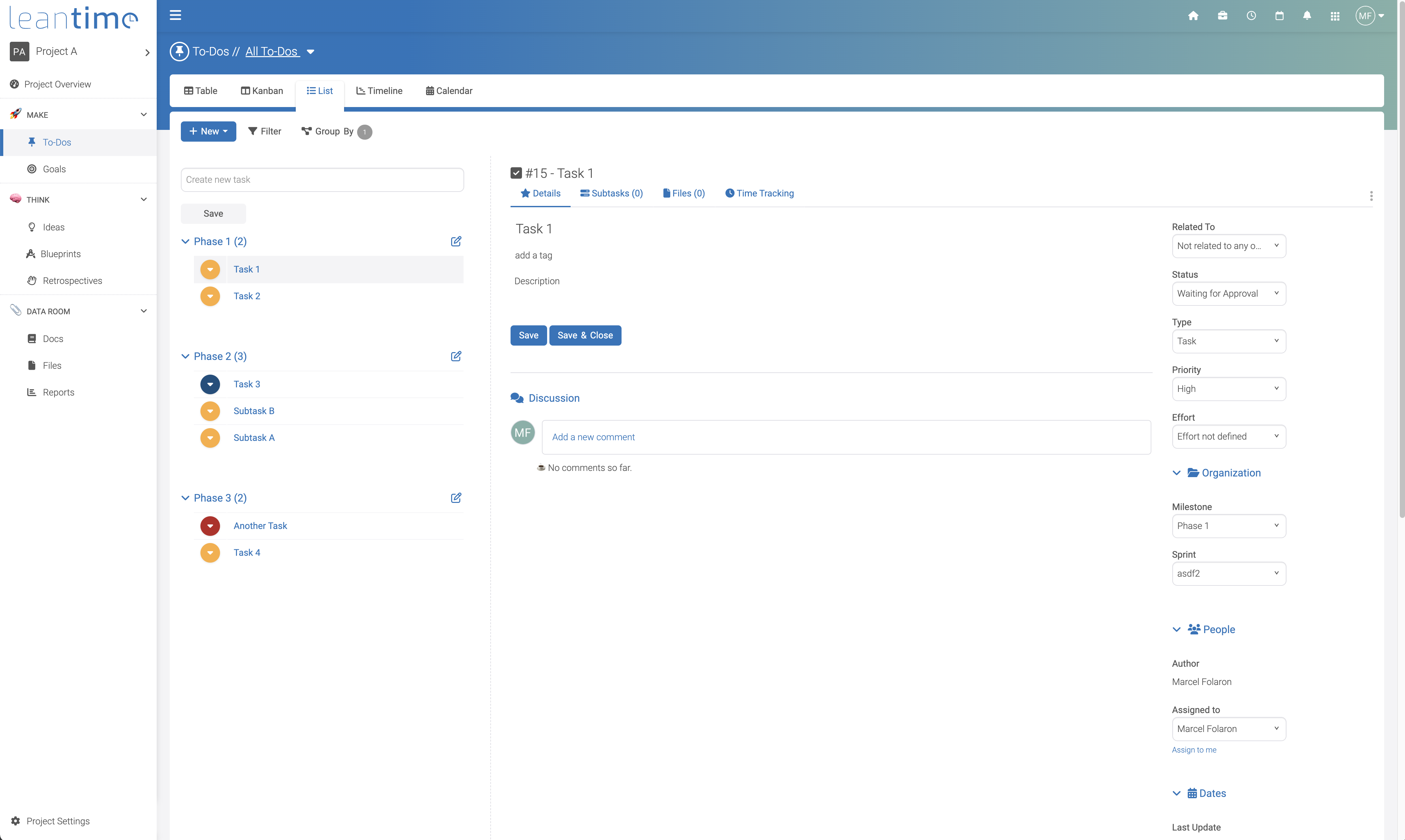 |
 |
 |
 |
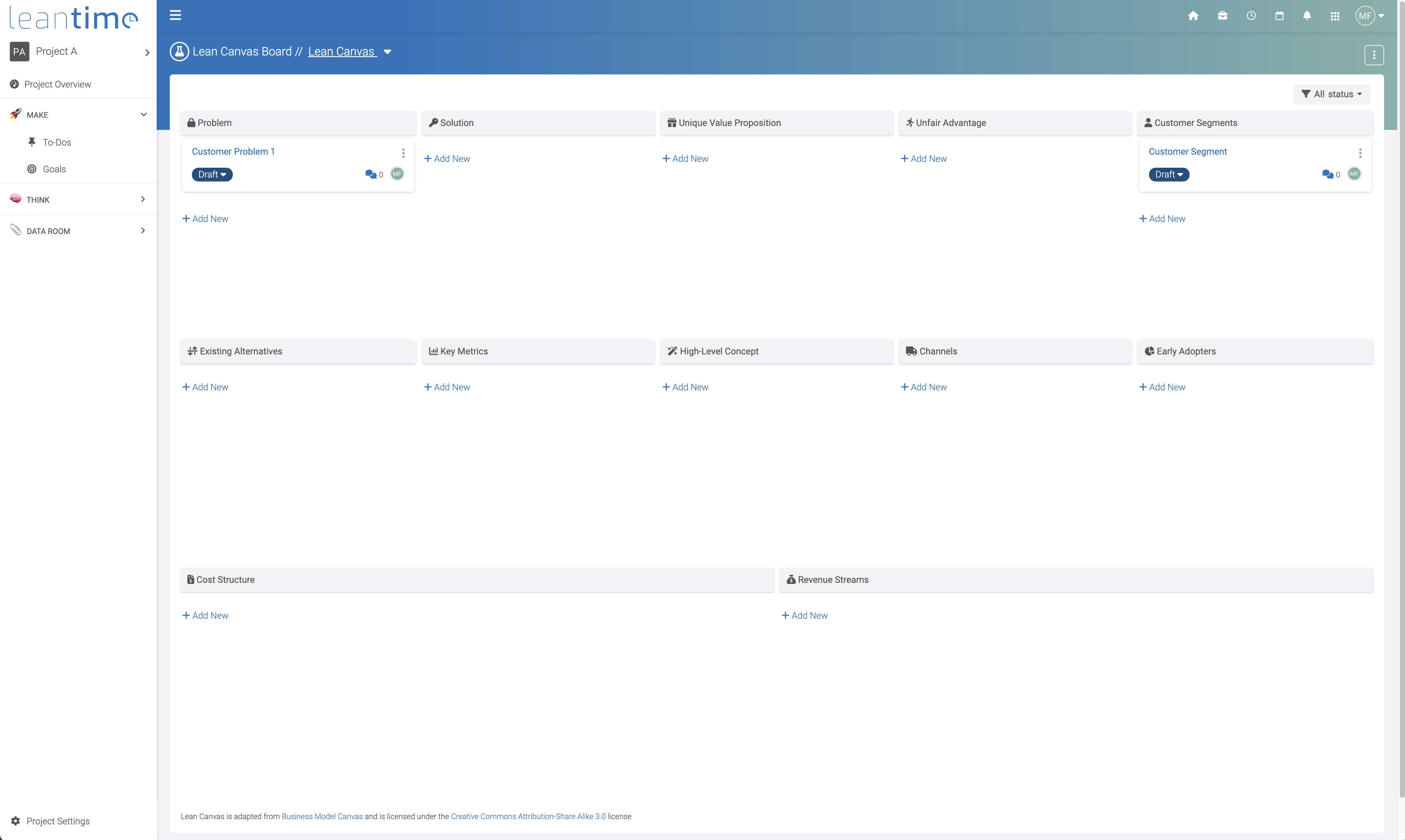 |
 |
 |
 |
 |
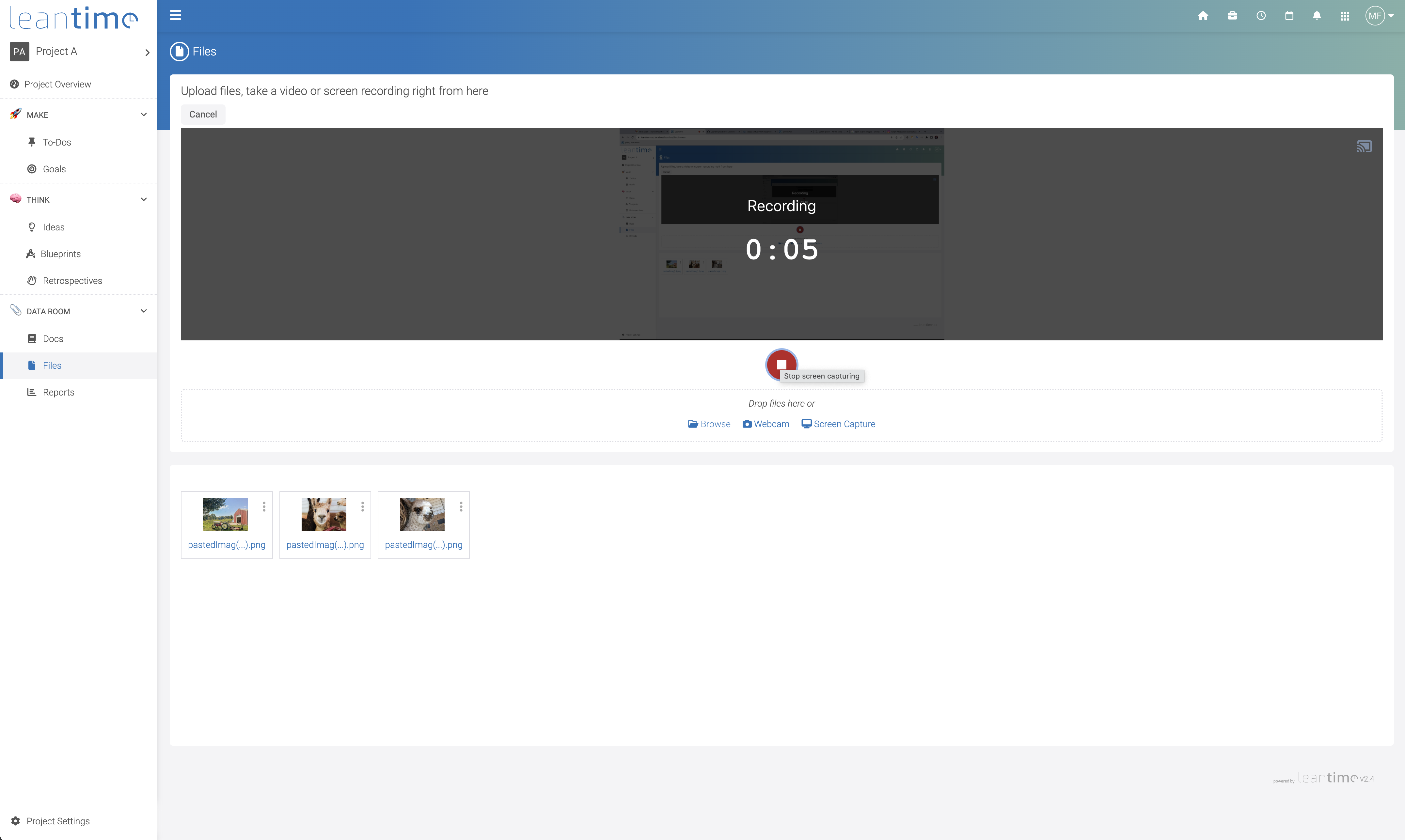 |
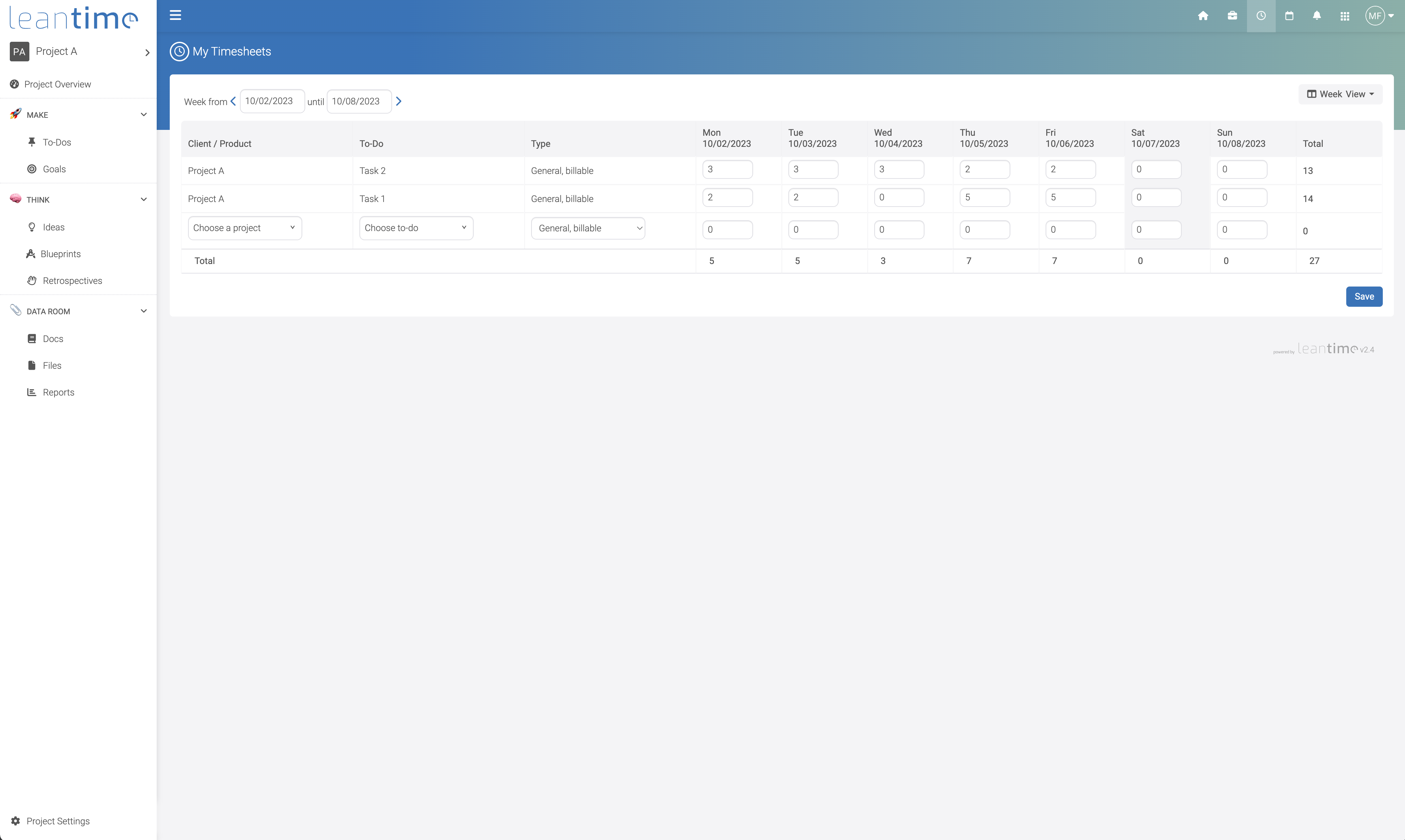 |
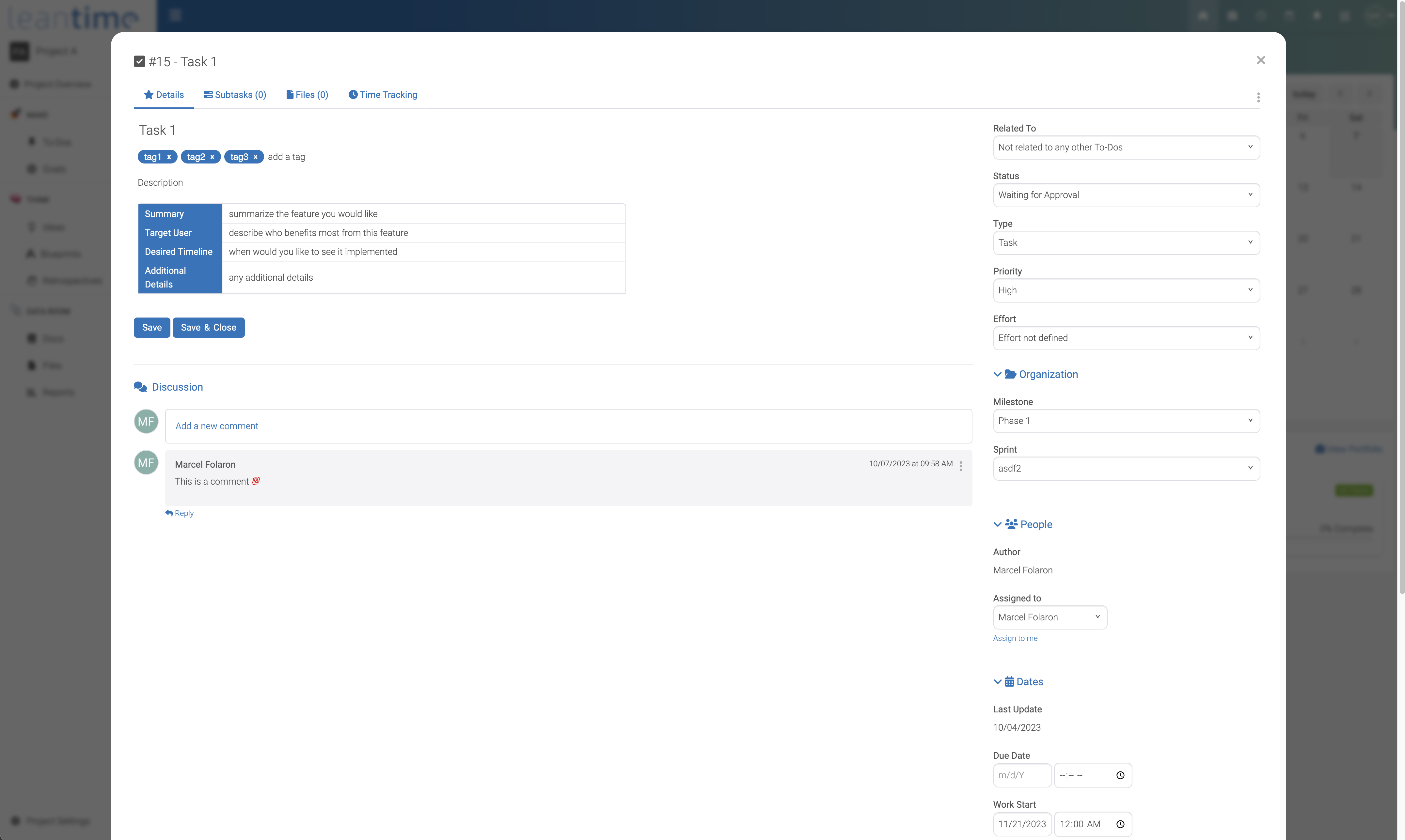 |
- PHP 8.1+
- MySQL 5.7+
- Apache or Nginx (IIS works with some modifications)
- PHP Extensions:
-
- mysql, mbstring, GD, exif, pcntl, bcmath, opcache, ldap
- mysql, mbstring, GD, exif, pcntl, bcmath, opcache, ldap
There are two main ways to install LeanTime for production. The first of which is to install all needed pieces of the system locally. The second is to use the officially supported Docker image.
- Download latest release package from our Website or Github
- Create an empty MySQL database
- Upload the entire directory to your server
- Point your domain root to the
public/directory - Rename
config/.env.sampletoconfig/.env - Fill in your database credentials (username, password, host, dbname) in
config/.env - Navigate to
<yourdomain.com>/install - Follow instructions to install database and set up first user account
We maintain an official Docker image on dockerhub. To run the image enter your MySQL credentials and execute. You can pass in all the configuration variables from .env
docker run -d --restart unless-stopped -p 80:80 --network leantime-net \
-e LEAN_DB_HOST=mysql_leantime \
-e LEAN_DB_USER=admin \
-e LEAN_DB_PASSWORD=321.qwerty \
-e LEAN_DB_DATABASE=leantime \
-e [email protected] \
--name leantime leantime/leantime:latest
Unless you have a database defined somewhere else you should use our docker-compose file.
Once started you can go to <yourdomain.com>/install and run the installation script.
There are two ways to install a development setup of LeanTime. The first (but most technical) is to install all pieces of the system locally. The second (and preferred method) is to use a docker containerized development environment.
- Clone repository to your local server
- Create MySQL database
- Run webpack builder via
make build-dev - Point your local domain to the
public/directory - Rename
config/.env.sampletoconfig/.env - Fill in your database credentials (username, password, host, dbname) in
config/.env - Navigate to
<localdomain>/install - Follow instructions to install database and user account
For development, we use a dockerized development environment. You will need to have docker, docker compose, make, composer, git and npm installed.
- Notes for Windows Environments:
- Run all commands within the git bash terminal in order to utilize unix specific commands
- If installing php from a zip file, make sure to configure php.ini
It does not exist initially, so copy C:\php\php.ini-development to C:\php\php.ini. You will also need to edit php.ini in a text editor and enable all needed extensions for the build process. You can find these by running the make commands and looking for any extensions that error out as missing. You can enable them by searching php.ini for the extension that will look like:
;extension=gdand removing the semicolon.
In order to build the development docker image, in the root of this repository, run a primer with
make clean build
afterwards, run
make run-dev
this will start the development server on port 8090.
The dev environment provides a MySQL server, mail server, s3 server, and should be good to go for your needs out of the box. The configuration of the development environment is found in .dev/.env, and is already seeded with the appropriate values. You should probably not be modifying this unless you plan to work on a feature for a specific integration. the applications you get are as follows
- http://localhost:8090 : leantime
- http://localhost:8081 : maildev - to check emails sent
- http://localhost:8082 : phpMyAdmin(authentication
leantime:leantime) to check the DB schema and data - http://localhost:8083 : s3ninja - to check s3 uploads. You need to enable this in the
.dev/.envfile by enabling s3
Additionally, Xdebug is enabled, but you will have to modify your
IDE key in the .dev/xdebug.ini file(or alternatively, on your IDE). You also need to have port 9003 temporarily open on your firewall so you can utilize it effectively. This is because connections from docker to the host will count as external inbound connections
- Make sure to take a backup of your database and files
- Replace all files in your directory with the updated version
- If there were any database changes, the system will redirect you to
<yourdomain.com>/update
- Execute ./updateLeantime.sh in the root of your leantime application.
- Before updating, make sure your mysql container was started using a mounted volume, otherwise your content will be deleted
- Delete/Stop existing container
- Pull the latest docker image and rebuild using your compose file
We offer managed hosting plans as well as a SaaS product so you can get all the benefits of Leantime without the hassle.
Head to leantime.io for more information.
We can help you set up Leantime in your environment and customize it to your needs. Our support plans are outlined on our website.
- Documentation https://docs.leantime.io
- Community Chat Discord
- File a bug report https://github.com/Leantime/leantime/issues/new
- Translations https://crowdin.com/project/leantime
Leantime is licensed under AGPLv3.
This file forms part of the Leantime Software for which the following exception is added: Plugins within the /app/plugins directory which may contain plugins licensed under other licenses including our enterprise license.






